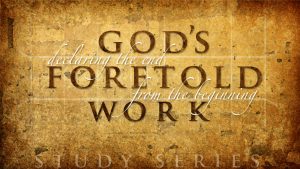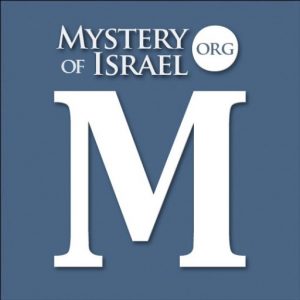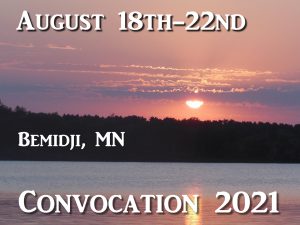Would you say that the “everlasting covenant” is synonymous with the “new covenant,” and are there any details you would give to fill in the meaning of that covenant?
I would say that there is no difference. In the prophets the Everlasting / New Covenant (‘covenant of peace’ etc.) is envisioned in connection with the salvation of the day of the Lord that follows a time of great transition that may be called, ‘Zion’s travail’ (Deut 4:30; Isa 13:5-8; 26:16-17; 66:8; Mic 5:3; Hos 5:15; 6:1-2). This is the time that Jeremiah would call, ‘the time of Jacob’s trouble’ (Jer 30:6-7), and Daniel would call, ‘a time of trouble, unequaled since there was nation.’ (Dan 12:1). Jesus uses very nearly the same language of Jeremiah and Daniel to speak of the unequaled ‘great tribulation’ (Mt 24:21) that ends in His return in clouds of glory (Mt 24:29-30; Rev 1:7). Likewise, Daniel is very clear that the unequaled tribulation ends in the deliverance of Israel and the resurrection of the righteous (Dan 12:1-2, 13). Finally, John in the Revelation will speak of ‘the tribulation, the great one’ (Rev 7:14). We see then that in both testaments the tribulation without equal marks the transition between this age and the age to come. The rabbis would call this time, ‘the footsteps’ or ‘birth pangs of the Messiah.’
From the standpoint of the prophets, the everlasting covenant is established when the Spirit of the Lord is poured out in connection with the post-tribulational deliverance of Israel (Isa 32:15-18; 59:21; Eze 36:26-28; 39:29; Joel 2:29-30; 3:15-16, 20-21; Zech 12:10). The day of national regeneration (Isa 66:8; Eze 39:22) is followed by a final and complete return to the Land that leaves no Jewish survivor behind (Isa 27:12-13; Eze 39:28). “From that day and forward” (Eze 39:22), the face of God is no more hidden from the nation (Eze 39:28-29). Every penitent Jewish survivor, and all the children born to them after the renewal, will ALL know the Lord, from the least to the greatest, so that never again will a Jewish inhabitant of the Land need to be evangelized (Isa 54:13; 59:21; 66:22; Jer 31:34). Moreover, none of the seed of Israel will ever again depart from this blessed estate (Isa 59:21; Jer 32:40). This is how the covenant can guarantee permanent security in the Land without further threat of exile (2Sam 7:10; Isa 32:17-18; 54:9-10, 14, 17; Jer 23:6; 30:10; 31:40; 32:37; Eze 34:25, 27-28; Hos 2:18; Amos 9:15; Zeph 3:13).
Paul’s expectation of the necessary reattachment of the natural branches is based on the covenant language of Isa 27:9; 59:21; Jer 31:34 with Ro 11:26-29. For Paul, the NC is not completely fulfilled until it has reached its climax in the day of the Lord salvation of ‘all Israel’ (Ro 11:26). This controversial phrase has been understood in a number of ways. Perhaps the most common interpretation is that Paul has in view the full gathering of all the elect, which some see as including a further ‘fullness’ of elect Jews from among the natural branches (Ro 11:12, 15). Because the landward side of the covenant has been so ignored by the church, belief in a future fullness for the Jewish branches is seldom associated with national salvation and return to the Land. This ought not so to be, since the landward side of the promise is an inalienable feature of the everlasting / new covenant, a ‘without which not’ of its ultimate fulfillment (Ps 105:10-11; Isa 60:21; 61:7-9; Jer 31:36; 32:39-41; Eze 37:25-26).
Our view is that Paul’s use of the phrase envisions precisely what the prophets envisioned, namely, the spectacle of an entirely saved Jewish nation (Isa 4:3; 54:13; 60:21; 59:21; Jer 31:34), serving the nations whose populations are not so uniformly born again. In contrast with the perennial presence of a remnant that would go into exile with the nation, the eternal salvation of the nation in its entirety (Isa 45:17, 25) assures of everlasting continuance in the Land (Mic 5:4). This is the ‘eschatology of the covenant’ from the OT perspective. .
When we come to the NT, the revelation of the ‘mystery of the gospel’ brings to light the ground and basis of the NC in what the writer of Hebrews will call, “the blood of the everlasting covenant.” The revelation of the mystery of the gospel does not, however, cancel or alter the full reach of the covenant promise in the ‘necessary’ covenanted salvation of ‘all Israel.’
This two stage aspect of the NC belongs to the mystery of Christ’s twofold advent, which introduces the ‘already and not yet’ pattern of NT fulfillment. The revelation of the basis of the NC in the death of Christ fulfills the promise of everlasting life reaching to the resurrection of the body for every regenerate believer. However, according to Paul, the NC has not reached its full goal until ‘all Israel’ dwells securely in their land as an entirely regenerate nation. The time of this great transition is clearly the future day of the Lord when the Deliverer comes out of Zion (Ro 11:25-27 with Isa 59:16-21; 63:4-5). The day of the Lord concludes the time that Paul calls, “the fullness of the gentiles” (Ro 11:25 with Eze 30:3; Lk 21:24). In contrast to ‘the times of the gentiles,’ or ‘the fullness of the gentiles,’ it is the time of “THEIR fullness” (Ro 11:12). Hence, the salvation of ‘all Israel’ is the end and open vindication of the everlasting covenant in the sight of all nations.
So we see the NC in two principal stages in the same way we see the salvation of Christ in two stages according the revelation of His twofold advent. It is the ‘already and the not yet’ pattern of NT fulfillment that is introduced by the revelation of the mystery of the gospel, which had been concealed in other ages in the prophetic writings (Ro 16:25-26; Eph 6:19). Unfortunately, the mystery has often been perverted to change and cancel what remains to yet be established with Israel. On the contrary, the NT no less than the OT anticipates the ‘restoration of all things,’ which the NT reveals as the time of Messiah’s second appearing (Acts 3:21; Heb 9:28). David spoke of a ‘set time’ to favor Zion (Ps 102:13), which the prophets would see in connection with a final travail of the nation that would end in the climactic day of the Lord (Isa 66:8; Eze 39:22).
When Jesus returns at the post-tribulational day of the Lord (Mt 24:29; Acts 2:20), the elect remnant that will have survived the terrors of the great tribulation will then look (by revelation and not only sight) upon Him whom they pierced (Zech 12:10) in tender analogy to Joseph’s self-disclosure to his brethren (Mic 5:3-4; Mt 23:39). The beleaguered remnant, now at the end of their power (Deut 32:36; Dan 12:7), will be born “at once … in one day” (Isa 66:8; Eze 39:22; Zech 3:9; Ro 11:26; Rev 1:7). We may note how such sudden and radical transformation of spiritual re-birth and resurrection bears remarkable analogy to Paul’s sovereign arrest on the Damascus road. It is now to be imagined what a nation of Pauls will mean for the further evangelization of the nations. This seems precisely what Paul anticipates in Ro 11:12, 15 (compare Isa 27:6; 60:3, 5; Mic 4:2; Zech 8:23).
Therefore, we conclude that for Paul, no less than the prophets, the everlasting covenant has not attained the full reach of its promise until it has arrived at the salvation of ‘all Israel.’ We have seen that this requires, as a covenanted necessity, the salvation of all the nation and not merely a larger remnant. This means that in order for the everlasting / new covenant to be fulfilled in all of its literal language and covenanted provisions, the prophets see a time on this present earth (after a final and unequaled tribulation) when there will not exist a single Jewish person that is unsaved. Admittedly, that is a radical proposition. It is certainly ‘against all odds,’ but a careful review of the above scriptures, if interpreted literally in their native context, seem to admit of no other explanation.
Yours in the Beloved, Reggie




